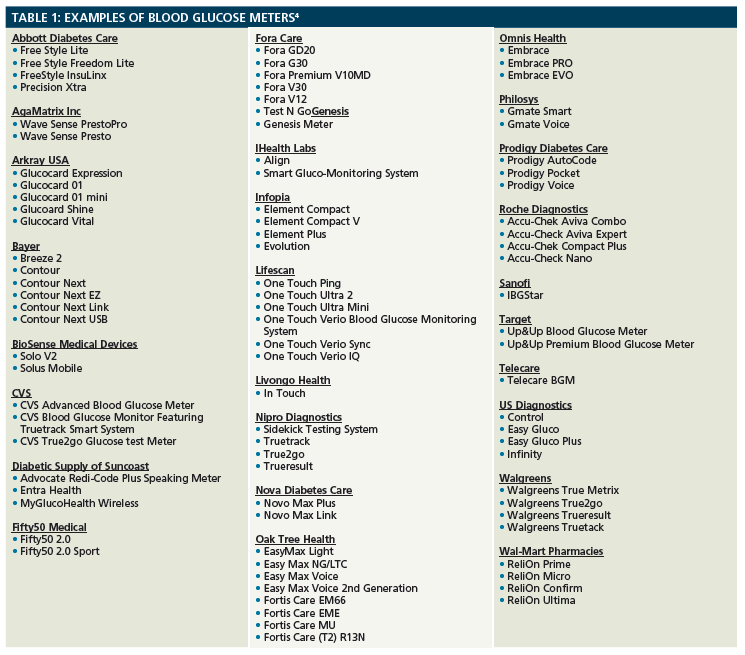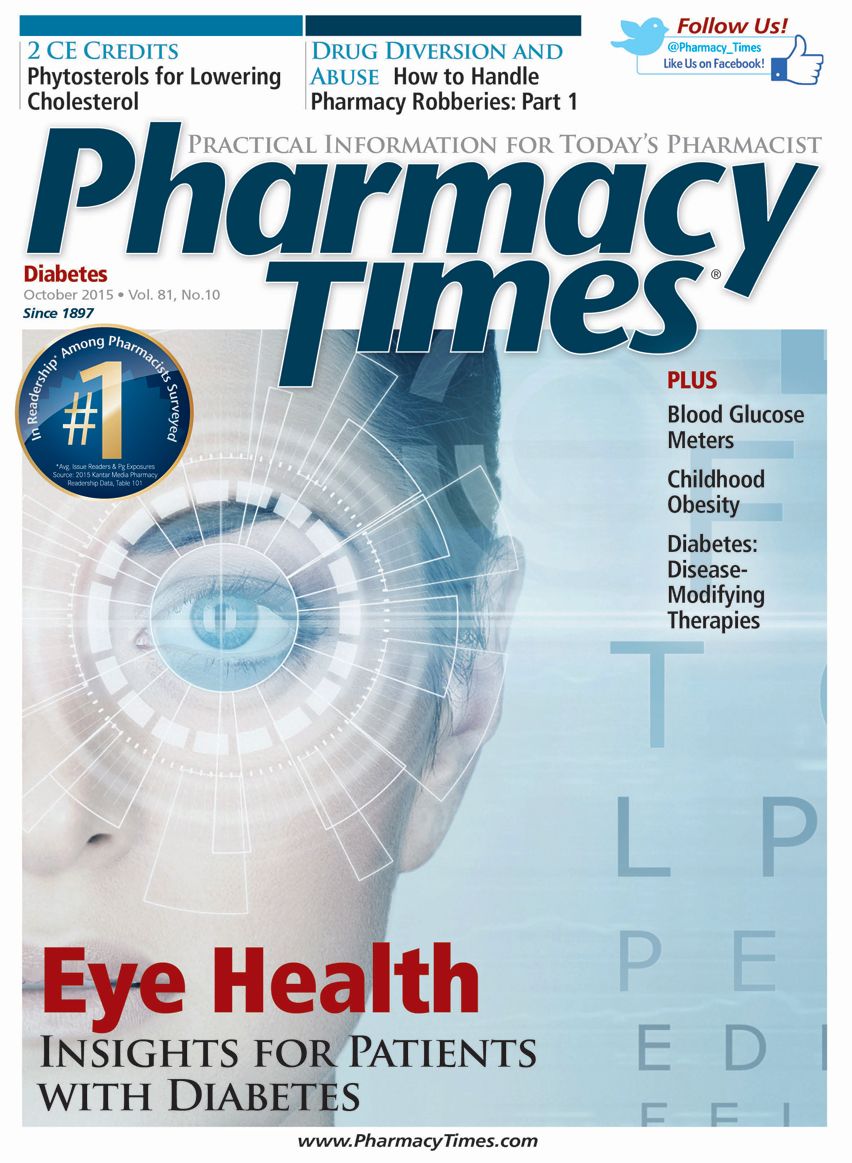Blood Glucose Meters: Effective Self-Monitoring
Receiving the news that you have pre-diabetes or diabetes may seem overwhelming for any patient diagnosed with this complex medical condition.
Receiving the news that you have pre-diabetes or diabetes may seem overwhelming for any patient diagnosed with this complex medical condition.
However, a reliable and easy-to-use blood glucose meter (BGM) can be an indispensable and powerful tool for all patients with diabetes.
BGMs allow patients to track blood glucose patterns and daily blood glucose targets, prevent or detect episodes of hyperglycemia or hypoglycemia, and monitor one’s glycemic response to certain foods, medications, physical activity, or therapy changes.1 Ample clinical study results reveal that maintaining tight glycemic control is critical to effectively managing diabetes, as well as reducing or preventing the various health complications associated with poorly controlled diabetes.

At present, there are a host of self-testing BGMs to suit the needs of all patients with diabetes, even pediatric patients (Table 14). Technological advances enable BGM manufacturers to make meters that are less invasive and less painful when testing, require a smaller sample size, are capable of alternate site testing, provide rapid test results, and allow testing without a major interruption to a patient’s daily routine.1 Moreover, some BGMs have large memory storage, which can translate to audio capability and the ability to measure blood pressure or ketones in addition to blood glucose levels.
Selecting a Blood Glucose Meter
Pharmacists are in a pivotal position to aid patients in the proper selection and use of self-monitoring BGMs. Factors and features that patients may consider when selecting a meter can include one or more of the following1,2:
- Ease of use and an easy-to-follow testing procedure
- Accuracy of test results
- Meter size
- Smaller blood samples required for testing
- Capable of using alternating testing sites
- Rapid testing procedure and availability of results
- Ease of portability to allow testing anywhere, including at school and work, and during leisure time
- Easy-to-read display
- Memory options
- Affordable costs of meter and testing supplies
- Battery types
- Cleaning procedure
- High-tech features, such as audio capability, blue tooth, and cellular capability
Once a patient selects a BGM that suits their individual needs, it is imperative that the patient become familiar with using the BGM and understands the proper testing procedure necessary to obtain reliable results. It is also critical that pharmacists stress to patients the importance of adhering to their recommended treatment plan, including medications, establishing regular blood glucose monitoring regimens, and maintaining a healthy, balanced diet and exercise routine. Patients should also be encouraged to keep a record of their blood glucose readings and to discuss these results with their primary health care provider during routine visits, as well as to immediately contact their primary health care provider if there are any concerns about blood glucose levels.
Conclusion
When counseling patients about at-home BGMs, pharmacists should seize the opportunity to ensure that patients are fully aware of the significance of routine blood glucose monitoring, adhering to therapy, and receiving regular medical care to effectively control diabetes and prevent or reduce the incidence of diabetes-related complications (Online Table 21-3). A BGM is an essential tool that every patient with diabetes should use routinely, and one of the best defenses in the fight against diabetes.
Table 2: Counseling Tips for Patients Selecting a Blood Glucose Meter1-3
- Always select a meter that best suits your needs and is easy to use. This will help to increase adherence for daily blood glucose checks.
- To minimize or prevent diabetes-related complications, always check blood glucose levels as directed by your primary care provider and learn the factors that may alter or affect those levels, such as eating certain foods, taking certain medications, stress, illness, and physical activity.
- Although patients commonly check blood glucose levels several times a day (ie, before meals, 2 hours after meals, or at bedtime), if you are uncertain, ask your primary health care provider how many times you should check your blood glucose level each day.
- It is important to be aware of the signs and symptoms associated with hypoglycemia (ie, sweating, chills, confusion, dizziness, lightheadedness, nausea) and hyperglycemia (ie, excessive thirst, elevated glucose levels and frequent urination), as well as how to properly manage these episodes.
- Prior to testing, gather all the supplies you will need.
- Before testing, always wash hands thoroughly with warm water and soap, and dry hands thoroughly with a clean towel.
- If alcohol-based hand sanitizer must be used to clean hands instead of warm water and soap, wait at least 1 minute to allow hands to dry before testing.
- Always read instructions before using the meter to ensure the correct testing procedure will be used. If possible, patients and caregivers should practice using the meter for the first time under the guidance of the primary health care provider, pharmacist, or diabetes educator to ensure the testing procedure is correct.
- To increase blood flow to fingers, hang hand below heart for 30 to 60 seconds.
- Select a finger from which to obtain a blood sample, and use a lancet device on the side of the finger to obtain a sample. Always prick the side of the fingertip since that area is less sensitive than the flat side of the fingertip and is less likely to bruise. Try to alternate fingers each time a test is performed.
- If using a meter that allows alternate-site testing (ie, fleshy part of palm, forearm, upper arm, thigh, and calf), remember that alternate testing sites are recommended only for a fasting state, before meals, and for more than 2 hours after physical activity or meals.
- Gently squeeze or massage finger to obtain an adequate blood sample size.
- Once you have your blood sample, immediately apply it on the test strip. Since methods vary with each meter, refer to the manufacturer’s meter instructions for proper technique.
- Apply pressure to the finger stick or alternate site to stop the bleeding, if needed, using a clean cotton ball.
- Wait for the results, and keep a record of results to review with your primary health care provider results.
- Discard used supplies in the proper waste container.
- Always clean the lancet device and store it in a safe place for next testing time.
- Discuss any concerns with your primary health care provider.
Ms. Terrie is a clinical pharmacy writer based in Haymarket, Virginia.
References
- Ulbrich T, Krinsky D. Self care components of selected chronic disorders. In :Krinsky D, Berardi R, Ferreri S, et al, eds. Handbook of Nonprescription Drugs. 18th ed. Washington, DC: American Pharmacists Association; 2015.
- Tsai A. Meters: does your device measure up? American Diabetes Association website. www.diabetesforecast.org/2015/mar-apr/meters-does-your-device-measure-up.html?__utma=227028104.467491154.1438886747.1438886748.1438886748.1&__utmb=227028104.12.0.1438886749057&__utmc=227028104&__utmx=-&__utmz=227028104.1438886748.1.1.utmcsr=%28direct%29|utmccn=%28direct%29|utmcmd=%28none%29&__utmv=-&__utmk=194901934. Published March 2015. Accessed August 4,2015.
- Checking your blood glucose. American Diabetes Association website. www.diabetes.org/living-with-diabetes/treatment-and-care/blood-glucose-control/checking-your-blood-glucose.html. Updated June 17, 2015. Accessed August 4, 2015.
- Blood glucose meters. Diabetes Forecast magazine website. http://main.diabetes.org/dforg/pdfs/2015/2015-cg-glucose-meters.pdf. Accessed August 3, 2015.

